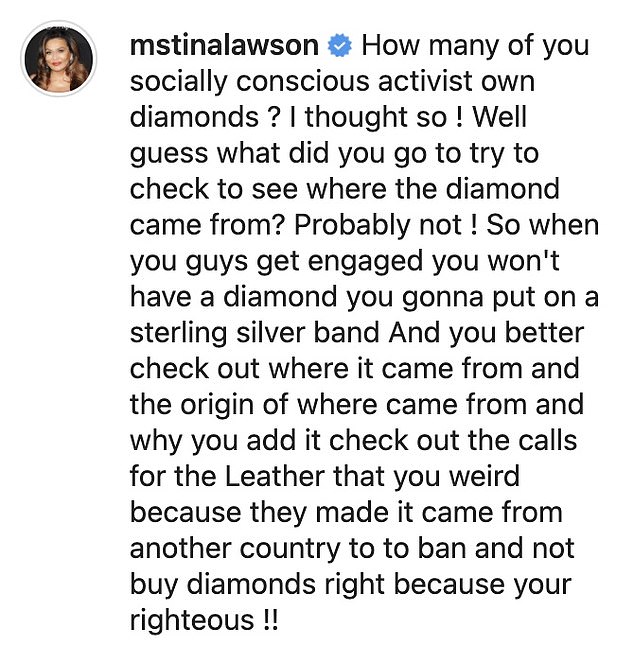Like a lot of legacy brands, Tiffany & Co. has been in the process of reinventing itself for a new generation of customers. And to that end, the jeweler has enlisted the help of Beyoncé and Jay-Z. Mrs. Carter and the mister. They appear alongside a painting by Jean-Michel Basquiat in the brand’s fall advertisement, in which capitalism collides with popular culture, race, sex and no small amount of magical thinking and good-for-the-gander hubris.
The campaign’s signature image is choked with references. It’s clogged with allusions. It isn’t aimed at selling a particular piece of merchandise, but rather the relevance and importance of the brand itself. But mostly what it’s selling is the Carters. And they are selling the glories of wealth, specifically to Black and Brown people.
They don’t shy away from it. They attend to it with loving seriousness. The husband and wife have weaponized and refined boastfulness.
The centerpiece of the image is Basquiat’s “Equals Pi,” a painting that rarely had been publicly seen and was recently acquired by Tiffany. It will hang in the company’s New York flagship, according to a
story in Women’s Wear Daily. The artwork bears all the hallmarks of Basquiat — the skulls, crowns, graffiti tags — against a pale blue backdrop. The painting’s particular shade of robin’s egg blue, and Basquiat’s affection for jewelry, has convinced Tiffany’s Alexandre Arnault, executive vice president of product and communications, that the work is a celebration of the brand, which packages its goods in similarly blue gift boxes. The company admittedly has no actual evidence that this is true. Arnault’s imagined homage by the late artist is a feeling, a coincidence that’s apparently too marketable to ignore.
The use of the painting in the advertisement has led to a social media debate over whether Basquiat would approve of his work serving such commercial purposes, which seems like a conversation rooted in another century, back before his artwork started
selling for $110.5 million at auction and before one could buy Basquiat skateboards, Doc Martens and side chairs.
In the ad, Beyoncé stands stiffly alongside the painting with her hands gripping her hips. Her sleeveless black gown, her updo and long gloves hark back to Audrey Hepburn in “Breakfast at Tiffany’s.” Beyoncé wears Tiffany’s 128.54-carat yellow diamond, which was mined in South Africa in 1877, around her neck. Her hourglass figure takes the place of Hepburn’s gamine frame. Her brown skin reflects the light instead of Hepburn’s ivory complexion. The enormous diamond, freighted with the history of colonialism, hangs around a Black woman’s neck. Beyoncé is a sculpture. She’s a reimagining of feminine iconography. She’s an entitled sentinel.
Jay-Z, dressed in a tuxedo, is comfortably slouched in a club chair. His hair is a rakish, pig-tailed, dreaded nod to Basquiat. He gazes soberly at Beyoncé — another object for the avowed collector to admire.
The campaign is titled “About Love,” but the image is static rather than roiling with emotion. The Carters are both distant and affectless. They don’t invite the viewer into their world as much as they stand pridefully over it. This Basquiat isn’t theirs, but they have intimate access to it. The contents of the Louvre didn’t belong to them either, but they laid claim to the “Mona Lisa” as they danced and strutted through the museum in their 2018 video for “Apes--t.” Jay-Z took on the world of art insiders back in 2013 with his marathon performance of “Picasso Baby” at the Pace Gallery in New York. Capitalism may not have been built for the Carters, but they’ve made it their own.
Tiffany is hoping to bask in their light. But the Carters are stingy with their reflected glory. They’ve entwined themselves with high art — not simply with the heady aesthetics of it, but the finances of it and the generational wealth that it represents.
Tiffany, founded in New York City in 1837, is now owned by the French luxury conglomerate LVMH Moët Hennessy Louis Vuitton after a contentious merger in 2020. While the Carters have no particular public affection for Tiffany, Jay-Z
sold part of his sparkling wine brand to LVMH earlier this year. Business and more business. Tiffany has also
pledged $2 million for scholarships and internships at historically Black colleges and universities. Its parent company, LVMH, is worth well over $300 billion.
What is Tiffany selling here? What story is it trying to tell? This Tiffany campaign promotes everything except the merchandise that the stores actually sell. Another set of advertisements did that. “It’s Not Your Mother’s Tiffany” featured images of young women in tank tops and T-shirts wearing the very jewelry that has been part of the company’s lineage for decades, such as the cuff bracelets designed by Elsa Peretti, who joined the brand in the 1970s. That campaign caused a kerfuffle for its dismissive tone toward older women.
But apparently the company remains your
father’s Tiffany, as mature men are still welcome to buy necklaces and watches and engagement rings, and that includes Jay-Z, who is 51 years old and a father.
So much that roils the culture is packed into Tiffany’s search for a new identity. Tiffany is trying mightily to speak to younger customers. It’s looking to attract an admiring gaze from an increasingly diverse population. It aims to highlight creativity. It’s attempting to elevate its merchandise to more than just stuff, but rather stuff with meaning. It wants to be aware and sensitive and enlightened.
Tiffany wants a lot. The Carters are giving them a little. The rich narrative belongs to Beyoncé and Jay-Z. They’re not sharing their cultural wealth.

 .
.

 . You tell them, Tina!
. You tell them, Tina!